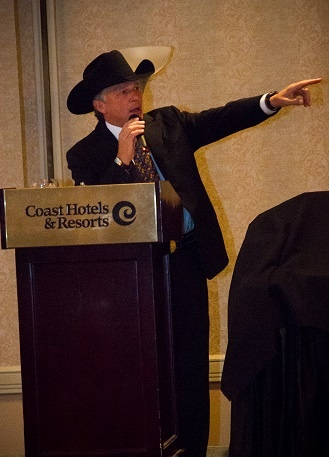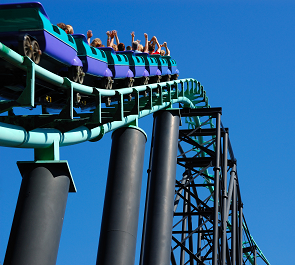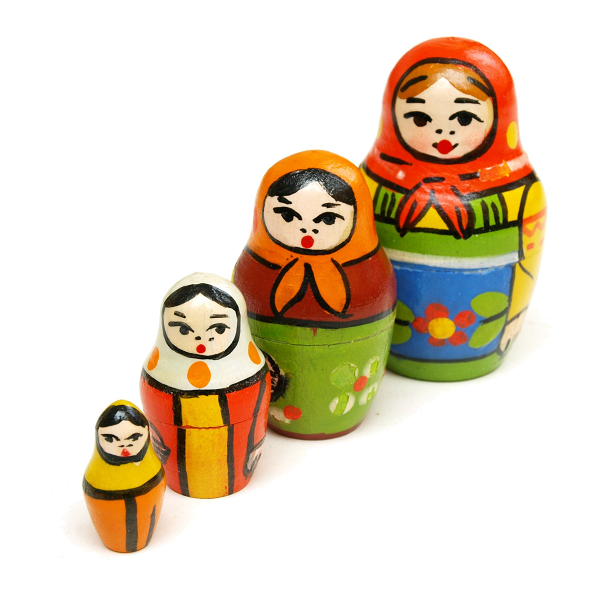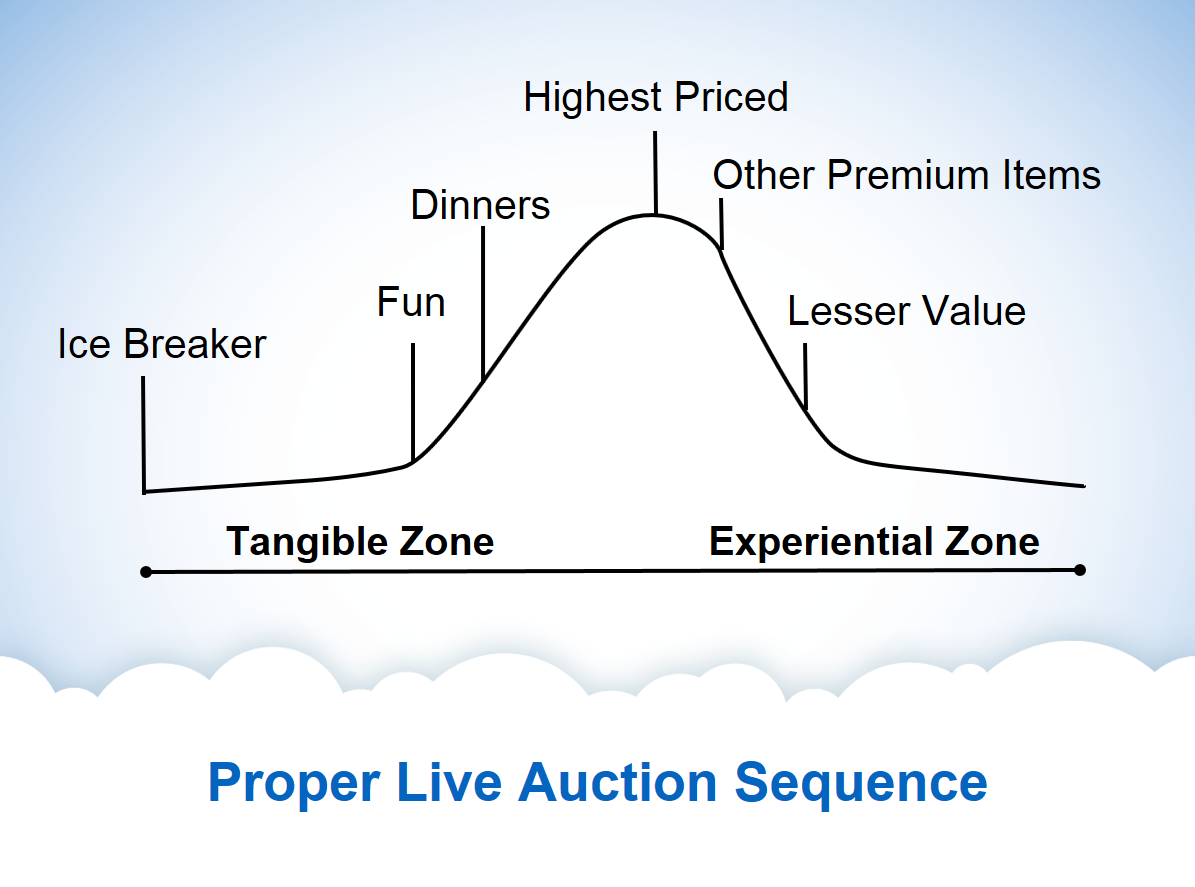Picture this: Your procurement team has done an amazing job getting valuable items donated, reserved or underwritten for the live and silent auctions. You have 7 to 12 standout items ready for the live auction, including a catered dinner party at a donor’s home, a flat-screen TV, sold-out concert tickets and a 5-night culinary excursion to Tuscany.
Now you need every item to bring in as much revenue as possible. Do you know how to order your live auction items to garner the highest bids?
Will you sequence your auction items in terms of increasing value? Alternate big-ticket and smaller items? Arrange by color, size, or alphabetical order? Does it even make a difference?
Fundraising auction experts agree: Order matters. The simplest and most effective way to lay out your live auction: Draw a bell curve. Read on to discover how this smooth sequence keeps the audience engaged, entertained and, most importantly, eager to bid.
Start of the curve
On the left we have the “tangible zone”: items that donors can typically see on the stage and take home that night. This includes household goods, electronics, food and wine and more. To get the crowd involved and comfortable bidding, start with lower-priced tangible items. One great way to use these items is in an icebreaker, as suggested by our friend and benefit auctioneer Danny Hooper in a recent webinar.
In an icebreaker, the auctioneer “auctions off” a tangible item worth a couple hundred dollars—think flat-screen TV, case of wine, gourmet chocolates or smart device—by saying something like the following:
“Folks, later this evening we’re going to be having a live auction. I know that a lot of you people here tonight perhaps have never been to a live auction. We don’t want you to be intimidated or embarrassed. We want to make it easy to put your hands up and bid on these great items. So we’re going to start with a little ice breaker auction for you to practice.”

That’s it! As soon as the auctioneer sees a hand go up, they declare the item sold for $20.
At first glance you might think you’ve “lost” a couple hundred dollars by essentially giving away that fine item. But an icebreaker actually multiplies event revenue for several reasons. First, it gets the crowd’s attention, cuts down on chatter and establishes the auctioneer as the leader of the night. The activity also keeps the crowd entertained—one of three basic tenants of a successful fundraising event.
{{cta(‘b2b1ab00-6239-4fa8-880a-9f27eb952865′,’justifycenter’)}}
Third and most importantly, your guests now have a taste of what they can expect in the full-blown auction. The night’s success depends on how easy and rewarding you can make it for guests to put their hands up and bid.
The more people that get in on the action, the more fun the night becomes, and the more money you raise.
The ascent
As we move along the bell curve, next up is “fun” items in the tangible zone. Here you might have a set of golf clubs with a country club membership, an autographed guitar, two tickets to a sold-out concert, or a “cookout package” with a shiny new grill, accessories and lawn chairs on stage.
This is your procurement team’s chance to get creative! Fun items appeal to almost everyone in the audience and are easy to get the crowd engaged.
{{cta(‘ace6904c-d5a9-4f23-afcc-36e09cf0f71e’)}}
This brings us to dinners in particular. If you’ve procured donated dinners and are serving a meal during your live auction, we recommend handling those sooner rather than later. The reason: People will bid more on dinners when they’re a little bit hungry!
Researchers at Cornell have shown we buy 31 percent more junk food at the grocery store when we’re hungry, and time and again we see this principle hold true at fundraising auctions. Those restaurant packages or a dinner for 6 with the charity’s president seem a whole lot more valuable as people are just starting to dig in, positively impacting how much guests are willing to bid.
Top of the curve

Increasingly, donors are willing to pay top dollar for unique experiences; studies show many of us are happier spending money on memories than more “stuff.”
Now suppose the most expensive item in your auction is priceless: say, a trip to the annual Kentucky Derby in Lexington. Where would be the best place to sell this premium item? Many charity auction organizers opt to place the most expensive package towards the end of the event, thinking this will build momentum and anticipation through the night.
In our experience, this is a common revenue mistake that’s easily avoided. Big-ticket items like priceless Experiences and travel packages belong at the top of the bell curve, and here’s why.
Let’s say you have a few people competing and bidding on that Kentucky Derby package. If the item has been donated, only one person is going to be lucky enough to win that package at, say, $9,000. So now you have 2 or 3 other bidders who backed out at $7,000 or $8,000. What happens to those other bidders who were willing a moment ago to spend up to $8,000 each? If the trip was at the very end of the auction, they would have no place to go. But now you can offer other premium items to follow the Derby trip.
Even better: Try offering this trip as a no-risk travel package from Winspire. These buzzworthy, exciting trips cost your organization nothing if they don’t sell for the minimum profitable price you set, and they can be sold as many times as you want!
So in the previous example, you could sell that Derby Experience to all 3 bidders for $8,000 apiece – tripling your revenue from one package alone, plus saving the hassle of trying to procure and coordinate a trip of this caliber.
{{cta(‘d30e274e-d519-429e-8124-430be6d9a1d6′)}}
Winspire offers a wide range of incredible packages that are risk-free and take just minutes to reserve. With free consultation from our Fundraising Specialists and top-notch travel professionals booking your donors’ Experiences, these trips can set the bar for your live auction.
{{cta(‘91403318-3ab0-4603-a312-9e2a6613faac’)}}
Descending the curve
Bring the live auction to a natural close by auctioning off the remaining lower-priced experiences. Smaller trips like a weekend getaway (combining restaurant gift cards with hotel stays), spa sessions and behind-the-scenes community tours are perfect options; they keep everyone’s attention and garner enthusiastic bids from those who may have missed out on previous items.
So, that was our quick overview of a strategy we’ve found successful in sequencing a live auction. Ultimately it’s up to your benefit auctioneer to decide how best to keep the crowd entertained, engaged and giving generously throughout the live auction.
You’ll also want to keep in mind that it’s important to include additional income streams, like a cash appeal, Fund-a-Need and Wildcard Auction, at the optimal points along the bell curve.


